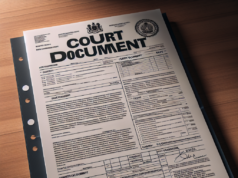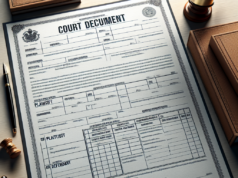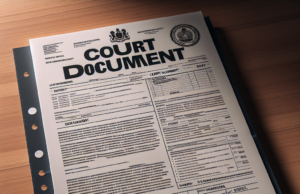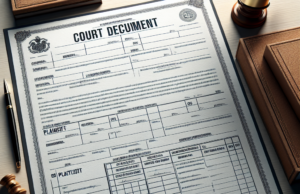
ARIZONA DIVORCE LAWS & REGULATIONS UPDATE 2023
A DECADE OF CHANGE: AN UPDATED OVERVIEW OF ARIZONA’S DIVORCE LAWS AND REGULATIONS TIMELINE (2013-2023)
Over the past ten years, Arizona’s divorce laws have experienced significant revisions, reflecting the state’s commitment to modernizing the legal framework while ensuring fairness, clarity, and the well-being of all parties involved in the divorce process. From property division to child custody, these changes highlight Arizona’s dedication to adapting to the changing dynamics of family relationships. This article provides an overview of the key updates in Arizona’s divorce laws and regulations from 2013 to 2023, presented in bullet points:
2013 – No-Fault Divorce Embrace:
– Adoption of “no-fault” divorce, allowing couples to dissolve their marriage without the need to assign blame or fault.
2014 – Enhanced Child Custody Standards:
– Implementation of child custody guidelines focused on promoting the best interests of the child.
– Ensuring a balanced involvement of both parents in the child’s life.
2015 – Property Division Guidelines Clarification:
– Enhancement of rules governing equitable distribution of marital property during divorce proceedings.
– Consideration of factors such as financial contribution and duration of marriage.
2016 – Alimony Guidelines Implementation:
– Introduction of guidelines for alimony (spousal support) awards to provide consistency and transparency.
– Factors like length of marriage, financial need, and earning capacity are taken into account.
2017 – Digital Documentation Acceptance:
– Adoption of provisions allowing digital documentation and electronic signatures in divorce processes for efficiency.
2018 – Parenting Plan Enhancement:
– Emphasis on comprehensive parenting plans outlining child custody, visitation, and support arrangements.
– Ensuring clarity and stability for children during and after divorce.
2019 – Expedited Divorce Process:
– Implementation of measures to streamline the divorce process, reducing unnecessary delays and administrative hurdles.
2020 – Child Support Guidelines Revision:
– Regular review and updating of child support guidelines to reflect changing economic realities and provide adequate support.
2021 – Domestic Violence Protections Strengthening:
– Reinforcement of provisions safeguarding victims of domestic violence during divorce proceedings.
– Measures aimed at ensuring safety and preventing further harm.
2022 – Online Filing and Resources Access:
– Introduction of online divorce filing options for increased accessibility and convenience.
– Enhancement of online resources to guide divorcing couples through the process.
2022 – Mediation Promotion:
– Encouragement of divorce mediation to facilitate amicable resolutions, reduce litigation, and foster cooperation.
2023 – Enhanced Spousal Support Evaluation:
– Consideration of updates to spousal support guidelines to ensure fairness and appropriateness in awards.
2023 – Military Divorce Special Considerations:
– Introduction of measures addressing specific challenges in military divorces, such as deployment and benefits.
2023 – Focus on High-Asset Divorces:
– Exploration of tailored guidelines for high-asset divorces to address unique financial complexities.
Arizona’s divorce laws have evolved over the past decade, reflecting the state’s commitment to modernizing its legal framework while prioritizing fairness and the well-being of all parties involved. These changes underscore Arizona’s proactive approach to addressing the complexities of divorce in the contemporary landscape. As the state continues to adapt its laws, it remains vital for stakeholders, policymakers, and the public to engage in informed discussions that balance the needs of families while upholding the principles of justice and equity.
Residency and Filing Needs
Divorce in Arizona revolves around several stipulations, but one simple thing you need to know without any confusion is the fact that in any divorce proceeding, one party – the party intending to file for the petition – is called the “Petitioner.” The other spouse then will be called the “Respondent.”
One requirement exists in the state of Arizona that needs to be met before filing.
• Either party must be a bona fide resident of the state of Arizona for at least 90 days before filing.
Reasons for Divorce in Arizona
There are many reasons for it, but for the most part the court separates all reasons into two categories:
• No-Fault Divorce
• Fault Divorce
There’s only one way to approve a “No-Fault” divorce determined by the court:
1) The Marriage Simply Needs to Be Irreparably Broken
“Fault” divorce in Arizona, however, is an entirely different situation.
Arizona as part of divorce law recognizes what is considered a ‘higher form’ of marriage, called a Covenant Marriage. From that, “Fault” divorces occur only if:
• Physical Harm or Sexual Harm by Respondent Toward the Petitioner
• Respondent Committed Adultery
• Alcohol Abuse by Respondent
• Drug Abuse by Respondent
• Respondent Has Moved Out of Residency for One Year Prior to Filing for Divorce and Refuses to Return
• Both Parties Have Been Living Separately For at Least One Year After the Date of Legal Separation
• Both Parties Have Been Living Separately For at Least Two Years Before Filing of Divorce
• Both Parties Agree to Dissolve the Marriage
Both “No-Fault” and “Fault” divorce have separate stipulations that can affect custody, child support, and spousal support.
Divorce in Arizona : The Definition of “Legal Separation” Versus “Divorce”
Of course, both parties to a marriage may elect to “legally separate” instead of proceed through a divorce. The difference?
A legal separation is this: when a couple decides to go their separate ways but still keeps their marriage intact. There are many reasons for doing this, such as medical insurance, tax reasons, etc. etc..
Typically, though, a legal separation does lead to a divorce agreement, however, can – but not always – lead to a legal separation. All grounds for divorce apply in this case, and then the marriage dissolves along with any benefits surrounding the marriage.
The Primary Documents For a Divorce in Arizona
They are listed as follows:
• Marital Settlement Agreement
• Acceptance and Waiver of Service
• Preliminary Injunction
• Credit Notification Form
• Affidavit Regarding Minor Children
• Request for Hearing
• Notice of Hearing
• Petition for Dissolution of Marriage
• Decree of Dissolution of Marriage
Divorce in Arizona : Property Distribution
Divorce in Arizona basically honors “community property” standards. This simply means that all assets acquired during the marriage are split between the parties no matter what wishes both parties may have.
By law the court must state to both parties about the fact that they need to come to some sort of agreement when it comes to property distribution. If, however, there’s no agreement, the court will decide.
In addition, the wife’s former or maiden name may also be awarded by the court once divorce has been finalized.
Divorce in Arizona : On the Subject of Spousal Support
For temporary reasons or permanent reasons, alimony can be awarded to either spouse on a case by case basis, following certain recommendations as stipulated by either side.
Dealing With Child Custody
This can be a difficult one to discuss, especially with parents dealing with heartache about where the child(ren) need to stay. You’re looking at four types of custody to address:
• Joint Physical Custody
• Sole Physical Custody
• Joint Legal Custody
• Sole Legal Custody
Typically, though, for ‘physical custody,’ either joint or sole must be decided. The same goes for ‘legal custody.’
“Joint Physical Custody” is when both parents share the child(ren) in terms of where the child(ren) reside: both the mother’s home, and the father’s home. Both parties also share the same physical responsibilities of taking care of the child – providing clothing, transportation to and from school, transportation to and from the doctor, etc. etc..
“Sole Physical Custody” Take that exact definition from above and remove one parent. Essentially only one party has the full physical rights, meaning the child(ren) retains only one address. The non-custodial parent, of course, obtains “Visitation Rights.”
“Joint Legal Custody” is slightly different than ‘physical custody,’ as it involves some of the more inner qualities of parenting in the long-term – such as how the child(ren) will live, the important decisions in the child(ren)’s lives. In addition, the child typically retains the father’s last name when joint custody is shared.
“Sole Legal Custody” Again, take that same definition and remove one party from the equation. That’s what ‘sole’ means. This, of course, changes everything in regards to the child. If one parent has sole legal custody, that means the other parent literally has no rights to the child at all. In some cases, not even visitation rights. The child(ren) can legally have the last name changed as well, and there’s nothing the other parent can do about the decisions made on behalf of the child(ren).
Divorce in Arizona : How to Determine Child Support If Necessary
For the state of Arizona, it’s pretty typical for child support to be handled on an Income Shares Model basis. This is conducted by taking W2’s, combining them, and through a particular formula determine an amount that would best fit the child(ren).
In addition, both parties can come to an agreement of child support; if no agreement can be achieved, though, the court will then decide based on the Model.



























